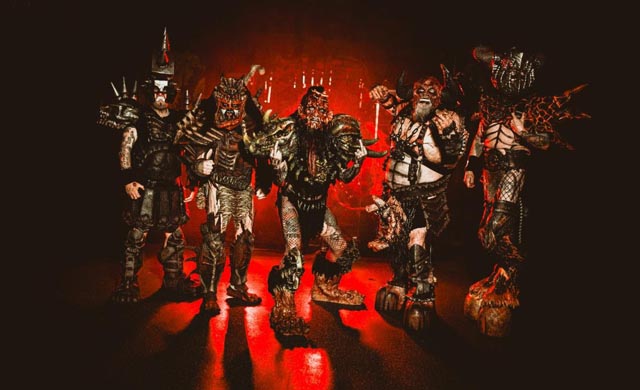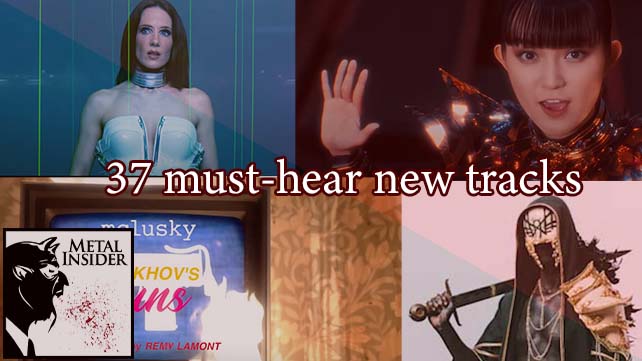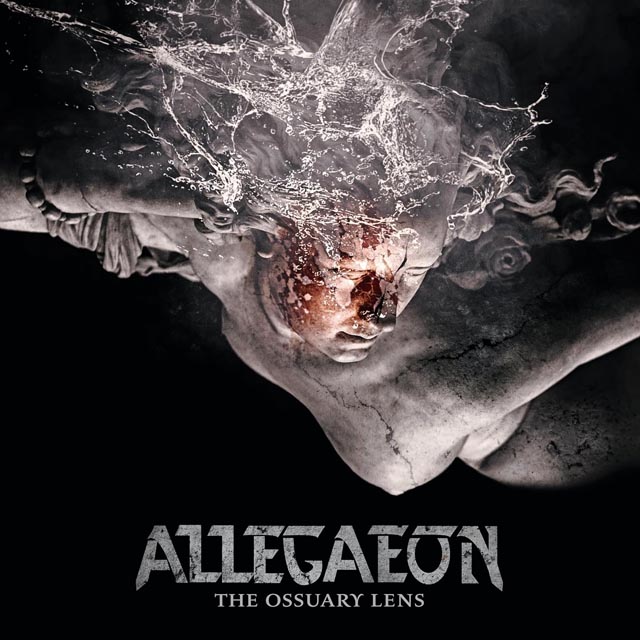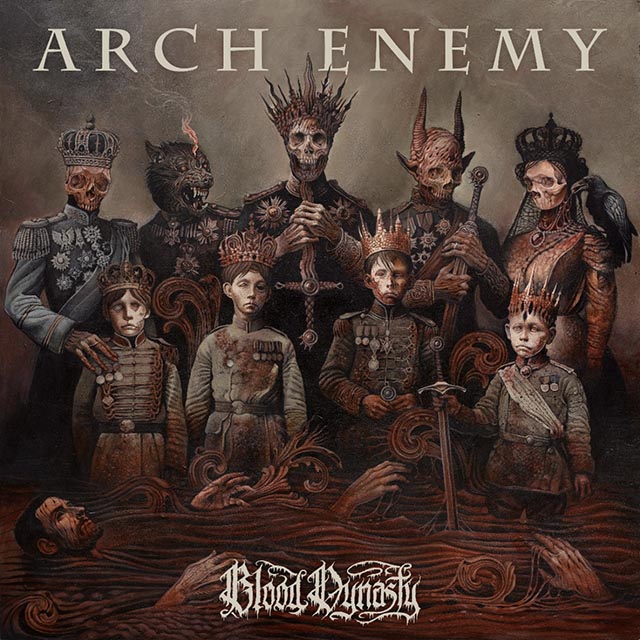 Metal is pretty popular on Spotify. In fact, you might remember that it has the most loyal fans of any genre, according to a study done by the streaming service. In fact, it’s getting more popular, as metal’s share of overall Spotify listening has increased 13% from 2014 to 2015. They categorize 91 different genres of metal, and while they don’t break down every single one of them, their blog, Insights, listed the top 25 genres. Even though they list less than a third of the genres (“Heavy Christmas” is one of them), it’s pretty exhaustive, and many of them overlap.Here are their descriptions of genre, some of which might seem a little “music 101” to any metal fan. Clicking on the genre will bring up a Spotify playlist of the genre.
Metal is pretty popular on Spotify. In fact, you might remember that it has the most loyal fans of any genre, according to a study done by the streaming service. In fact, it’s getting more popular, as metal’s share of overall Spotify listening has increased 13% from 2014 to 2015. They categorize 91 different genres of metal, and while they don’t break down every single one of them, their blog, Insights, listed the top 25 genres. Even though they list less than a third of the genres (“Heavy Christmas” is one of them), it’s pretty exhaustive, and many of them overlap.Here are their descriptions of genre, some of which might seem a little “music 101” to any metal fan. Clicking on the genre will bring up a Spotify playlist of the genre.
Alternative Metal mixes the heavy guitars of metal with elements of alternative rock. Emerging in the early ’90s, alternative metal includes melodic vocals and unconventional, experimental sounds or song structures (example: Disturbed).
Nu Metal is a form of alternative metal combining groove metal and thrash metal, with elements of grunge, hardcore, hip hop, funk, and industrial. It’s a hybrid synthesizing many disparate elements, in other words — just about anything goes, so long as it’s modern metal that incorporates influence from other genres (example:Drowning Pool).
Hard Rock uses distorted electric guitars, bass guitar, drums, and often pianos or keyboards to give an extra edge to traditional rock. It has roots in the mid-’60s and influences from garage, blues, and psychedelic rock (example: Ted Nugent).
Groove Metal is a slowed-down version of thrash metal. It has an intense sound but is played at mid-tempo (DevilDriver).
Rap Metal fuses the vocal and instrumental elements of hip hop with those of heavy metal and hard rock (Linkin Park).
Funk Metal is alternative metal that combines the guitar riffs of heavy metal with the bass grooves of funk. Funk metal originated in the ’80s and saw a heyday in the ’90s (Audioslave).
Metal is where you’ll find many of the originators and progenitors of the overarching metal genre (Iron Maiden).
Metalcore, or metallic hardcore, blends extreme metal and hardcore punk. Its sound is distinguished by its emphasis on breakdowns, which are slow, intense passages when the audience can mosh (Parkway Drive).
Speed Metal originated in the late ’70s to mid-’80s from the NWOBHM (new wave of British heavy metal) and hardcore punk. It’s characterized by extreme speed, staccato drumming, single-note riffing, and technical guitar solos. Speed metal spawned thrash metal and power metal (King Diamond).
Melodic Metalcore is a fusion of metalcore and melodic death metal. It features melodic guitar riffs, blast beats, breakdowns, and vocals that are sung, screamed, or growled (Killswitch Engage).
Industrial Metal takes inspiration from industrial, heavy metal, hardcore punk, and dance music. It usually centers on repeated metal guitar riffs, with samples, synthesizers, sequencers, and distorted vocals (Marilyn Manson).
Progressive Metal is a combination of prog rock and heavy metal that originated in the UK and the US in the late ’80s. Progressive metal fuses the aggressive sound of heavy metal with the more experimental, complex structures of progressive rock, using classical and jazz compositional techniques (Queensrÿche).
Power Metal is a melodic form of heavy metal and speed metal. It features fast guitar hooks and bass riffs, as well as guitar solos, keyboards, and high male vocals. Its sound is generally upbeat and anthemic, unlike the doom-like or aggressive sound of other metals (Avantasia).
Death Metal is extreme heavy metal with heavily distorted guitars, growling vocals, blast-beat drumming, tremolo picking, minor keys and atonality, and multiple tempo changes (Death).
Thrash Metal is characterized by fast drumming, complex, shredding guitars, and anti-establishment themes. Thrash originated in the ’70s and ’80s, influenced by punk and hardcore (Slayer).
Glam Metal is a fusion of hard rock and heavy metal. It features pop-influenced melodies and hooks combined with hard rock and heavy metal elements from the ’70s. Glam metal musicians are known for their long hair, tight clothing, and excessive accessories (Poison).
Melodic Death Metal is extreme heavy metal that originated in the ’90s. It combines fast, harmonic guitar riffs from the new wave of British heavy metal with death metal elements such as distorted guitars, blast beats, and fast drumming (Misery’s Crown).
Neo Classical Metal is heavy metal that is influenced by classical music. Neoclassical metal does not use classical composition techniques, so much as it plays classical themes in metal style and emulates the frills and flourishes of Baroque music, with very technical playing, especially by the guitars (Symphony X).
Symphonic Metal, based somewhat on classical and film music, often features an operatic female lead vocalist; prominent, complex, and technically challenging keyboard parts; and strings (Delain).
Death Core combines death metal’s speed, dissonance, blast beats, low screams, and dark tones with metalcore’s melodic riffs and heavy, down-tuned breakdowns, minus the clean singing (Whitechapel).
Gothic Metal shares sonic elements with heavy metal and doom metal, and also derives textures from gothic rock. The genre originated during the early ’90s in Europe, originally as an outgrowth of death-doom metal (Sirenia).
German Metal is heavy metal from Germany with elements of speed and power metal (Mystic Prophecy).
Gothic Symphonic Metal blends the dark themes of gothic and the hard rock guitars of metal with the grandeur of symphonic classical music. Delicate, usually female vocals contrast with the distorted guitars (Leaves’ Eyes).
Stoner Rock is rock with a slower tempo, low-tuned guitars, heavy bass, and melodic vocals. It incorporates elements of heavy metal, blues rock, psychedelic rock, hardcore, and doom metal (Orange Goblin).
Folk Metal features folk elements of the artists’ home countries, including lyrical themes, language, instruments, and costumes. It originated in Europe in the ’90s (Eluveitie).
Not bad – except we’ll dock them a point for spelling “deathcore” wrong.






